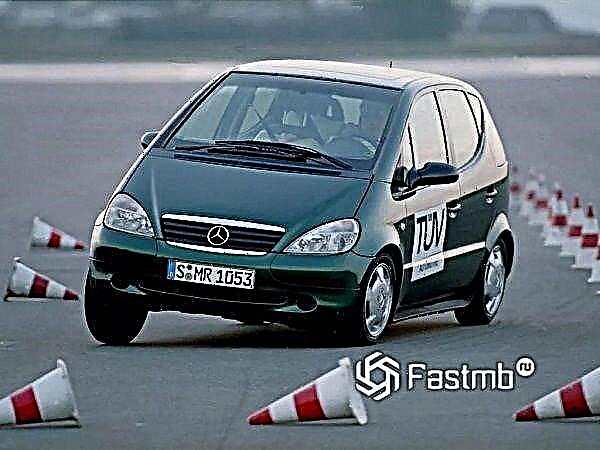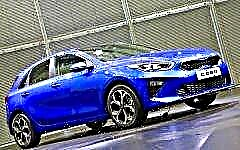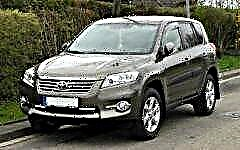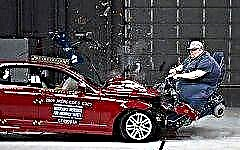

The content of the article:
- A minute of history
- How the traction control system works
- ESP system
- Who Needs Traction Control Technology
All car manufacturers now pay maximum attention to vehicle safety, equipping them with the most reliable and high-tech means.
Traction control is the first assistant to the driver for extremely tight grip on the road, without which a modern car is inconceivable.
A minute of history

The technology began to develop in the 1930s and owes its origin to Ferdinand Porsche, who introduced a mechanical limited slip differential. After the first experience, when the off-road was able to quickly stabilize torque and regain traction of the wheels with the road, automakers saw a lucrative future for the system and began to invest resources in its development.
The forefathers in the creation of automatic systems can be called the Americans, who in the 70s equipped one of the Buick models with it. Called MaxTrac, the system automatically monitors wheel alignment to prevent spin by reducing engine speed.
The technology began to be used in series since the late 70s, mainly on high-power vehicles. This was due to the high torque of the wheels, which by definition created a risk of slipping. But gradually the system became a must-have feature for any model, as did anti-lock ABS.
The electronic traction control system reached Europe by 1979, first tested at the BMW. And in 1987, Mercedes-Benz cars, for which it was developed by Bosch, also received it.
However, the design turned out to be too bulky and low-functional, and therefore by the 1990s the system was upgraded to the ASR5 version, which is simpler, cheaper and more convenient to install. Its parts were located in a single body, and the braking forces were performed by a high-power return pump.
It is logical that over time, traction control systems began to be used on models used in auto racing. The first team to equip it with their car was the Ferari team, preparing for Formula 1 in 1990. However, race organizers quickly banned the practice.
How the traction control system works

On a bad road, both a young driver and an experienced one can skid. Those who consider this a normal phenomenon in the autumn-winter period are too frivolous about the situation.
Slipping is a dangerous phenomenon, which, with poor visibility in bad weather on a slippery road, can cause not only a skid, but also an emergency situation for road users.
Before talking about the system itself, it is worth remembering the movement of the car itself, which occurs due to the adhesion of the wheels to the road. If there is ice or water on the road, there is not enough grip - then what happens? The car starts to slip, lose dynamics and controllability, and there is also a risk of skidding and damage to tires.
The purpose of anti-slip technology is to control the wheel speed. In fact, it looks like this: if during the movement the wheels start to rotate too quickly, control mechanisms come into operation, which correct the movement by braking or reducing the torque.
For the effective implementation of this system, certain factors are required:
- equipping the car with ABS and ESP systems;
- design of the "electronic gas pedal", which is a direct contact between the gas pedal and the throttle valve
In simple terms, it is ABS, just the opposite. Antilock braking removes braking from the wheels for better grip, while anti-slip adds it for a similar purpose. Even during operation, neither both use the information of the same sensors.
Despite the differentiation of names for different manufacturers - ASR, TRC, TCS and others, they have the same principle of operation, as well as the use of signals from automobile sensors that notify about the speed of the wheels, their position, and the level of slip.
After analyzing this information, the technology can perform specific actions:
- using solenoid valves, vary the pressure in the brake system, reducing the speed of rotation of the wheels;
- send a torque decrease signal to the powertrain control controller;
- change the force of the torque directed to the stalled wheel by partially locking the differential;
- summarize and apply all or some of the above actions.
The capabilities and functionality of each specific traction control system primarily depends on the vehicle design, and then on the software level.
ESP system

The first system development, patented by Daimler-Benz, appeared in 1959 and was called the "control device". She did not make a revolution, but the company's engineers did not give up, continuing to improve the ESR. By 1995, after a series of tests on premium models, it went into series production on the CL 600 coupe, after which the S and SL class cars spread.
It is now one of the most common systems and deserves special consideration. It controls the directional stability of the car, eliminating side slip, turns and other unpleasant rotations on the road.
ESP compares the direction set by the driver with the actual movement of the car, focusing on information from the sensors several times per second, that is, without leaving the car "unattended" literally for a moment. In the event of a discrepancy between these trajectories, the system immediately calculates options for the most effective correction of the situation and eliminates skidding or sliding.
The electronic block controller, constantly processing information from the sensors, thinks over its own scheme of actions. The most important signals come from the yaw rate and lateral acceleration sensors. When the side slip around the vertical axis exceeds the allowable value, ESP comes into play.
Perhaps every modern car is equipped with stabilization technology as an option or a basic version. It is directly linked to the anti-lock braking ABS, without which the ESP cannot function. Additionally, in the process of work, contact with the control unit is also required, that is, in fact, all three act in a complex manner, creating a counter-emergency defense.
At this time, the world's most eminent automakers continue to refine the technology, the Japanese Lexus and Toyota, as well as the German brands Mercedes, BMW and Volkswagen, have reached particular hesitation.
From time to time, companies start joint projects, sharing experience with each other, and sometimes they attract independent young teams to get new vision and ideas.
But with different names and different manufacturers, the basic principles of the system do not differ much. Therefore, the consumer should trust the “standard” technology of the purchased car or install it as an option at the car manufacturer of his model, without being deceived by the fact that someone else might have it better.
Who Needs Traction Control Technology

There is a persistent misconception that experienced motorists on their own will cope with any traffic situation much more efficiently than electronic assistants. And fans of extreme driving do not rarely turn off the system, which interferes with effectively entering corners and "smoke" with tires.
The technology can be deactivated by simply pressing a button on the dashboard, however it has a number of undeniable advantagesto be aware of before decontamination:
- Reducing the risk of tire damage.
- High degree of safety on the road in winter, in the presence of wet or slippery surfaces, during cornering maneuvers.
- Increasing the resources of the power unit.
- Fuel economy.
- Provides a more comfortable and predictable ride through reliable traction.
- Improved handling.
Of the shortcomings of the system you can only point out the above-described dissatisfaction of drivers with the fact that they are losing control over traffic, giving the reins of control to electronics.
Still, before disabling the traction control system, you should carefully weigh its truly invaluable assistance on bad roads and your own driving and response skills in an emergency.











